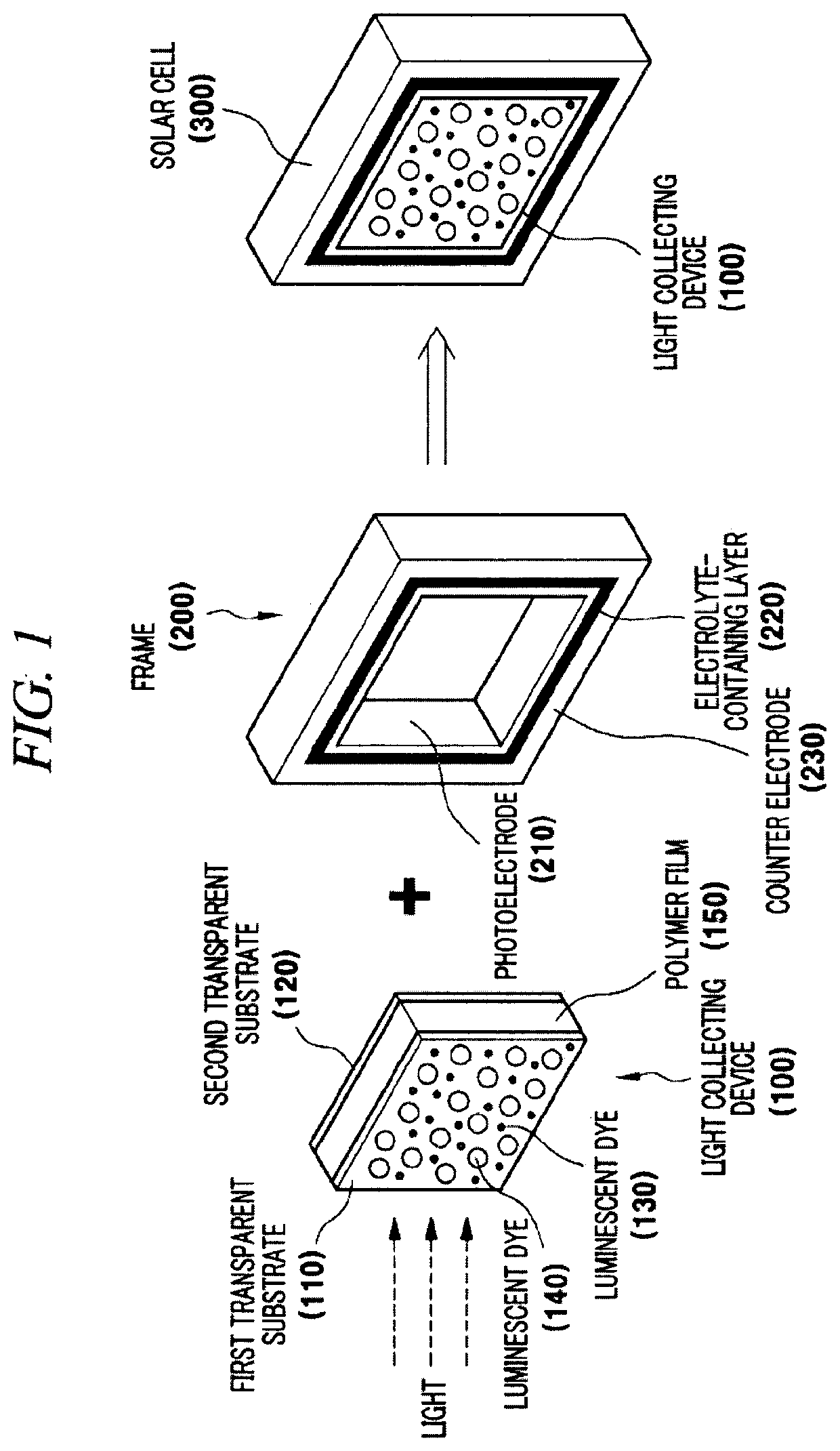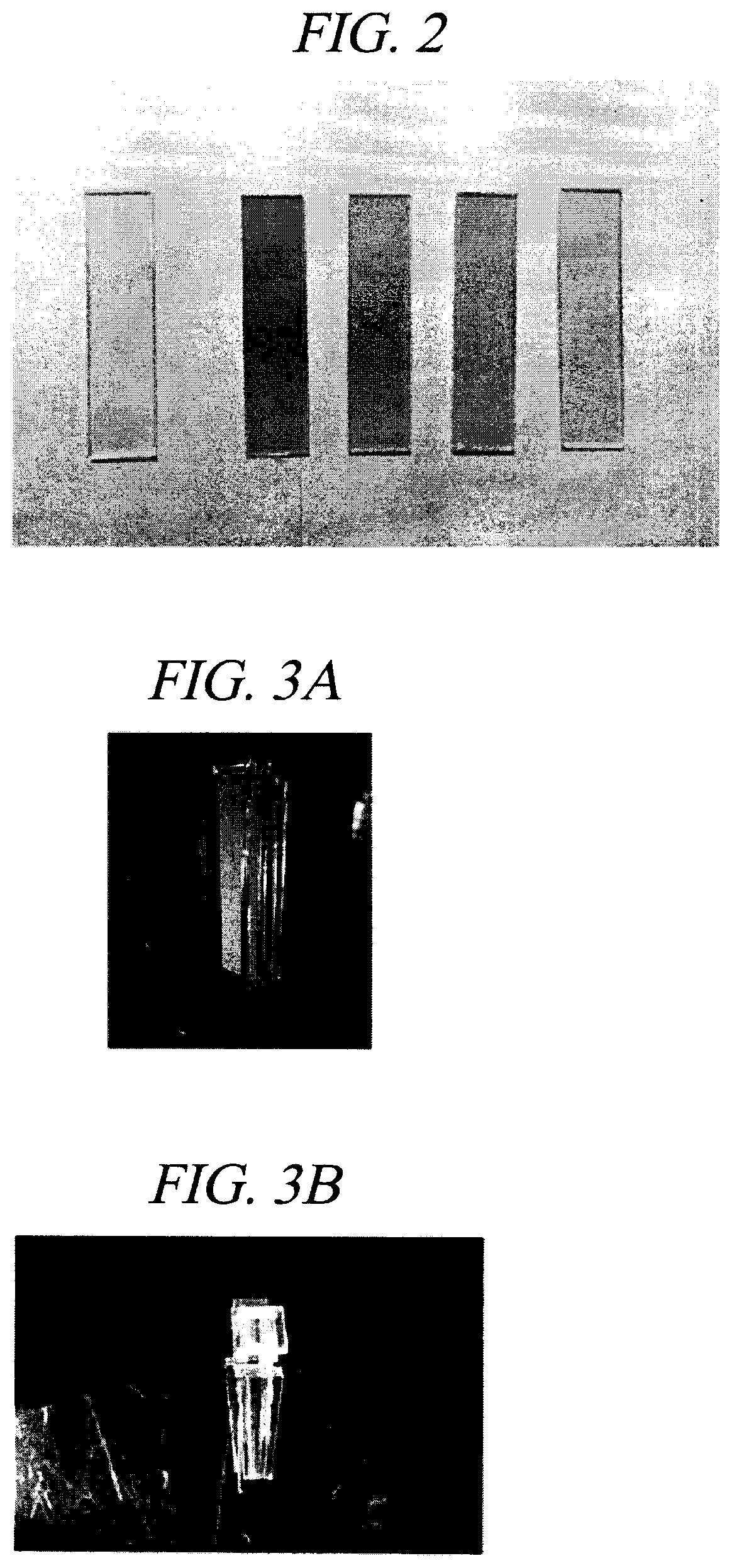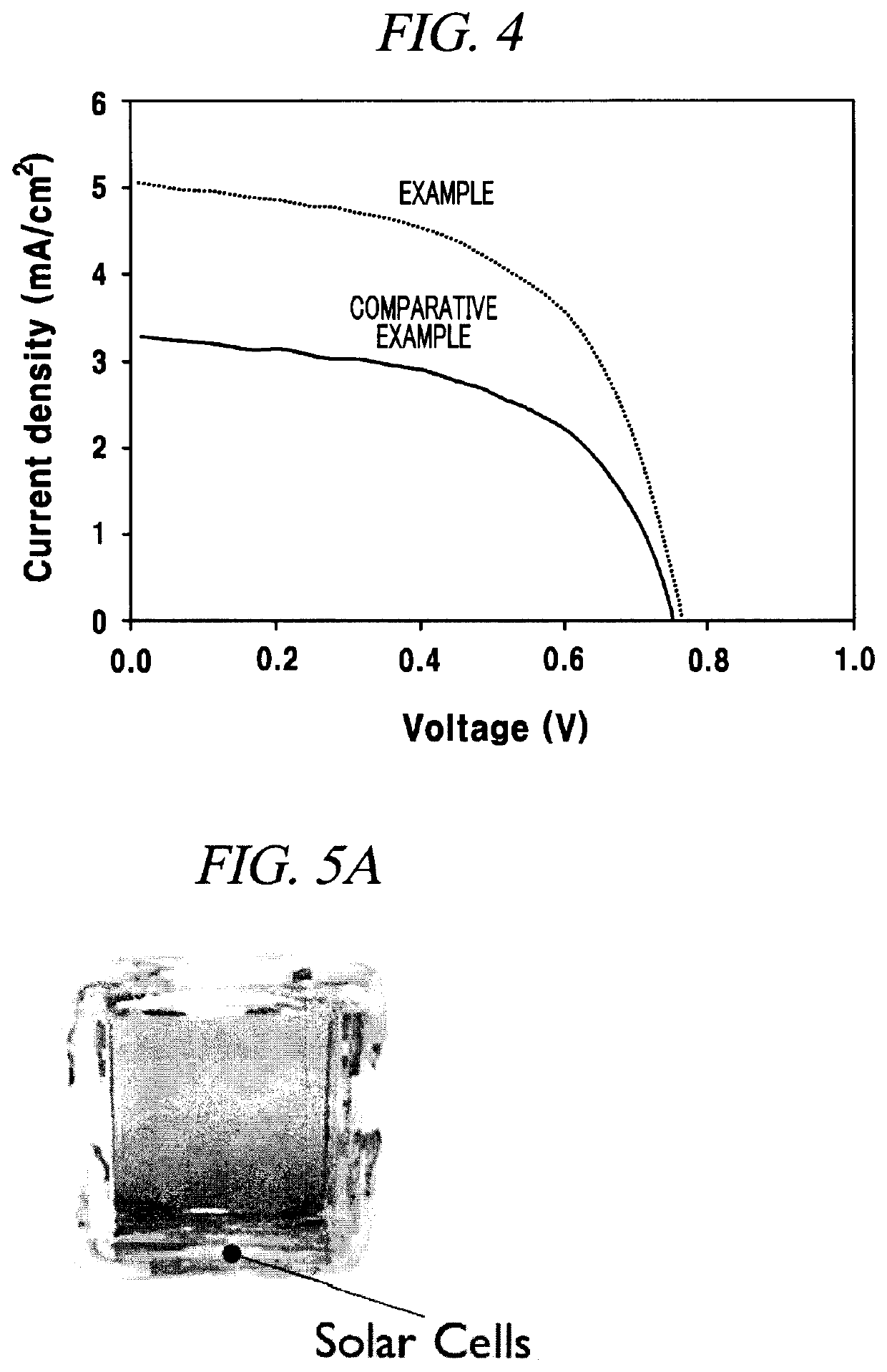Dye-sensitized solar cell comprising light collecting device panel
- Summary
- Abstract
- Description
- Claims
- Application Information
AI Technical Summary
Benefits of technology
Problems solved by technology
Method used
Image
Examples
example 1
[0093]A dye-sensitized solar cell including a light-collecting device panel according to the present example was manufactured as follows. First, 9,10-bis(phenylethynyl)anthracene (BPEA) as a first luminescent dye and palladium(meso-tetraphenyl-tetrabenzoporphyrin) (PdTPBP) as a second luminescent dye were dispersed in chloroform and then added to and mixed with a polyurethane solution. Then, the polyurethane solution mixed with BPEA and PdTPBP was vortexed at room temperature and then rotary-evaporated at 40° C. to evaporate chloroform. Then, the solution from which chloroform was evaporated was dropped in two transparent glass substrates and hardened overnight to manufacture a light-collecting device panel.
[0094]The light-collecting device panel manufactured as described above was brought into contact with TiO2 photoelectrodes (containing a D205 dye) formed at respective four inner corners of a frame and then fixed with tape. The four photoelectrodes were simultaneously brought int...
example 2
[0102]A dye-sensitized solar cell including a light-collecting device panel as shown in a photograph of FIG. 5A was manufactured by the method used in Example 1. The light-collecting device included a polyurethane polymer film containing a BPEA luminescent dye as a down-conversion luminescent dye and was composed of the polymer film and a glass panel covering the polymer film. Four dye-sensitized solar cells were connected to four corners of the light-collecting device. A dye-sensitized solar cell including a light-collecting device panel was finally implemented. As shown in a graph of FIG. 5B, the efficiency of the solar cell was measured as 9.1%.
example 3
[0103]A dye-sensitized solar cell including a light-collecting device panel with a different kind and concentration of luminescent dye was manufactured by the method used in Example 1. The light-collecting device contained both BPEA and PdTPBP and was manufactured with various concentrations of these luminescent dyes. The luminescence efficiency of the luminescent dyes at each concentration was measured and a result thereof was as shown in FIG. 6. Specifically, the BPEA and PdTPBP luminescent dyes were dispersed in chloroform solvents, respectively, to prepare luminescent dye solutions. These solutions were mixed with a polyurethane solution and then, the solvent was evaporated with a rotary evaporator to prepare a polymer film in which the luminescent dyes were dispersed uniformly. The luminescence efficiency of the luminescent dyes may vary depending on the concentrations of the luminescent dyes contained in the polymer film. Under the test conditions of the present example, a pol...
PUM
| Property | Measurement | Unit |
|---|---|---|
| Transparency | aaaaa | aaaaa |
| Wavelength | aaaaa | aaaaa |
| Luminescence | aaaaa | aaaaa |
Abstract
Description
Claims
Application Information
 Login to View More
Login to View More - R&D
- Intellectual Property
- Life Sciences
- Materials
- Tech Scout
- Unparalleled Data Quality
- Higher Quality Content
- 60% Fewer Hallucinations
Browse by: Latest US Patents, China's latest patents, Technical Efficacy Thesaurus, Application Domain, Technology Topic, Popular Technical Reports.
© 2025 PatSnap. All rights reserved.Legal|Privacy policy|Modern Slavery Act Transparency Statement|Sitemap|About US| Contact US: help@patsnap.com



